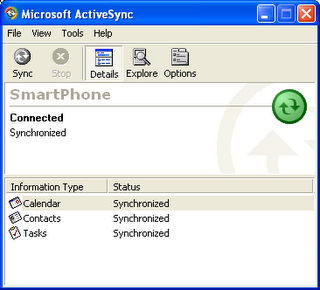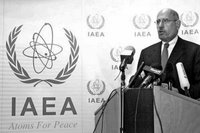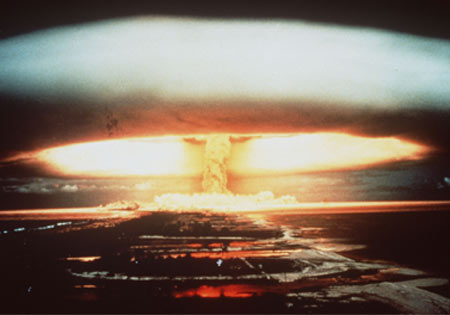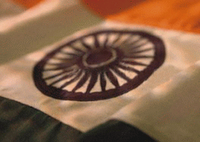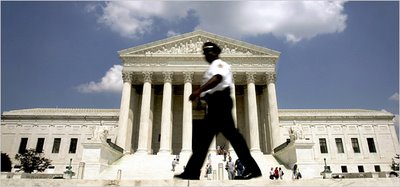Varanasi in the time of terror
This is an edited piece of “Varanasi in the time of terror”, written by Ms. Vidya Subrahmaniam for The Hindu; it appeared in the July 26, 2006 online edition of the news paper. For the full article, go to http://www.hindu.com/2006/07/26/stories/2006072602271000.htm
State action against terrorism will succeed if Muslims have the confidence that the community as a whole will not be called to account for terror executed by a few. Communal harmony is not a pseudo-secular cliché, it is a necessity in the aftermath of terror, and for proof there isVaranasi
Calm returned to Varanasi…within hours of the March 7 bomb blasts. The primary target was the outlying Sankat Mochan temple — a quaintly uplifting shrine, large of heart and eclectic in spirit, much like Varanasi itself. The strike on the temple was intended to inflame passions, to pit injured Hindu religious sentiment against perceived Muslim savagery. But Varanasi rose so superbly to the occasion that columnists doffed their hats to its indomitable strength, marvelling at a people who said they were nothing without their composite culture. Kashi Nagri, of the conjoined Vishwanath temple and Gyanvapi mosque, of Hindus and Muslims as silken in manner and speech as the beautiful Banarasi saree, and as interlinked as its warp and weft, became a byword for peace and harmony.
The Varanasi example
This is not political correctness, and for proof there is Varanasi, where two men of religion, one Hindu, the other Muslim, showed the way to mutual trust, the amazing spin-off from which includes voluntary Muslim action to regulate the functioning of madrassas, searching questions within the community on the place of terrorism in Islam, and, above all, the ringing denunciation of terrorism by Islamic scholars belonging to different schools
The process was started by Veer Bhadra Misra, the learned Mahant of the Sankat Mochan temple, who today commands an iconic following among Muslims for his expert management of the post-blast fallout. Having reopened the temple within hours of the blast and resumed puja and aarti, the Mahant did the one thing that needed to be done — eviction from the complex of those looking to start trouble, among them the volatile Vinay Katiyar.
The return to normality was essential to prevent communal distrust. The Mahant was to find a friend in Abdul Batin Nomani, Mufti-e-Benaras and Imam of the Gyanvapi mosque. The first Sunday after the blast, the young Muslim priest was in the temple, receiving ganga jal from the Mahant. The Mahant and the Mufti jointly visited hospitals and attended to the comfort of the injured. Inspired by them, leaders from both communities, including a dozen or so Muslim clerics, followed suit.
Four months after the Mahant and the Mufti joined hands in an affirmation of Hindu-Muslim solidarity, the tentative "reaching out" has flowered into a movement the impact of which is plain to see. Joint campaigns, composite music festivals, seminars on communal amity, invitations to the Mahant from Muslims and to the Mufti from Hindus, and the incredible sight of burqa-clad women reciting the Hanuman Chalisa at the Sankat Mochan temple — it is competitive secularism of a kind rarely seen, wonderfully elevating, and all the more special for daring to take root on holy soil defiled by terrorists intending to spread doubt and disharmony.
Is this merely showcase cohabitation? How long will it be before another bomb blast, or a deliberate provocation from a disgruntled element from either side, disrupts this joyous celebration of unity? Communal harmony is easier extolled in seminars than achieved on the ground, and to pretend that Varanasi's unique experiment has no detractors would be to oversimplify the achievement.
The Mufti received flak from orthodox Muslims for his foray into the temple to accept ganga jal as did the Muslim women who recited the Hanuman Chalisa. The Mahant is a disliked figure among Hindu extremists. But as the Mufti told The Hindu, "terrorism, fundamentalism, are all threats to communal harmony. The important thing is that we have understood and defeated that design. We have emerged stronger from terrorism. Today Varanasi is a model of communal amity. Let other cities follow our example."
Faced with terror, Kashi Nagri showed courage, returned to normal, and embraced peace. It does not matter to Varanasi's Muslims that the state pursues Islamist militants. Spunk and harmony may not foil terrorism, but they do foil the design to divide and disrupt.
State action against terrorism will succeed if Muslims have the confidence that the community as a whole will not be called to account for terror executed by a few. Communal harmony is not a pseudo-secular cliché, it is a necessity in the aftermath of terror, and for proof there is
Calm returned to Varanasi…within hours of the March 7 bomb blasts. The primary target was the outlying Sankat Mochan temple — a quaintly uplifting shrine, large of heart and eclectic in spirit, much like Varanasi itself. The strike on the temple was intended to inflame passions, to pit injured Hindu religious sentiment against perceived Muslim savagery. But Varanasi rose so superbly to the occasion that columnists doffed their hats to its indomitable strength, marvelling at a people who said they were nothing without their composite culture. Kashi Nagri, of the conjoined Vishwanath temple and Gyanvapi mosque, of Hindus and Muslims as silken in manner and speech as the beautiful Banarasi saree, and as interlinked as its warp and weft, became a byword for peace and harmony.
The Varanasi example
This is not political correctness, and for proof there is Varanasi, where two men of religion, one Hindu, the other Muslim, showed the way to mutual trust, the amazing spin-off from which includes voluntary Muslim action to regulate the functioning of madrassas, searching questions within the community on the place of terrorism in Islam, and, above all, the ringing denunciation of terrorism by Islamic scholars belonging to different schools
The process was started by Veer Bhadra Misra, the learned Mahant of the Sankat Mochan temple, who today commands an iconic following among Muslims for his expert management of the post-blast fallout. Having reopened the temple within hours of the blast and resumed puja and aarti, the Mahant did the one thing that needed to be done — eviction from the complex of those looking to start trouble, among them the volatile Vinay Katiyar.
The return to normality was essential to prevent communal distrust. The Mahant was to find a friend in Abdul Batin Nomani, Mufti-e-Benaras and Imam of the Gyanvapi mosque. The first Sunday after the blast, the young Muslim priest was in the temple, receiving ganga jal from the Mahant. The Mahant and the Mufti jointly visited hospitals and attended to the comfort of the injured. Inspired by them, leaders from both communities, including a dozen or so Muslim clerics, followed suit.
Four months after the Mahant and the Mufti joined hands in an affirmation of Hindu-Muslim solidarity, the tentative "reaching out" has flowered into a movement the impact of which is plain to see. Joint campaigns, composite music festivals, seminars on communal amity, invitations to the Mahant from Muslims and to the Mufti from Hindus, and the incredible sight of burqa-clad women reciting the Hanuman Chalisa at the Sankat Mochan temple — it is competitive secularism of a kind rarely seen, wonderfully elevating, and all the more special for daring to take root on holy soil defiled by terrorists intending to spread doubt and disharmony.
Is this merely showcase cohabitation? How long will it be before another bomb blast, or a deliberate provocation from a disgruntled element from either side, disrupts this joyous celebration of unity? Communal harmony is easier extolled in seminars than achieved on the ground, and to pretend that Varanasi's unique experiment has no detractors would be to oversimplify the achievement.
The Mufti received flak from orthodox Muslims for his foray into the temple to accept ganga jal as did the Muslim women who recited the Hanuman Chalisa. The Mahant is a disliked figure among Hindu extremists. But as the Mufti told The Hindu, "terrorism, fundamentalism, are all threats to communal harmony. The important thing is that we have understood and defeated that design. We have emerged stronger from terrorism. Today Varanasi is a model of communal amity. Let other cities follow our example."
Faced with terror, Kashi Nagri showed courage, returned to normal, and embraced peace. It does not matter to Varanasi's Muslims that the state pursues Islamist militants. Spunk and harmony may not foil terrorism, but they do foil the design to divide and disrupt.

